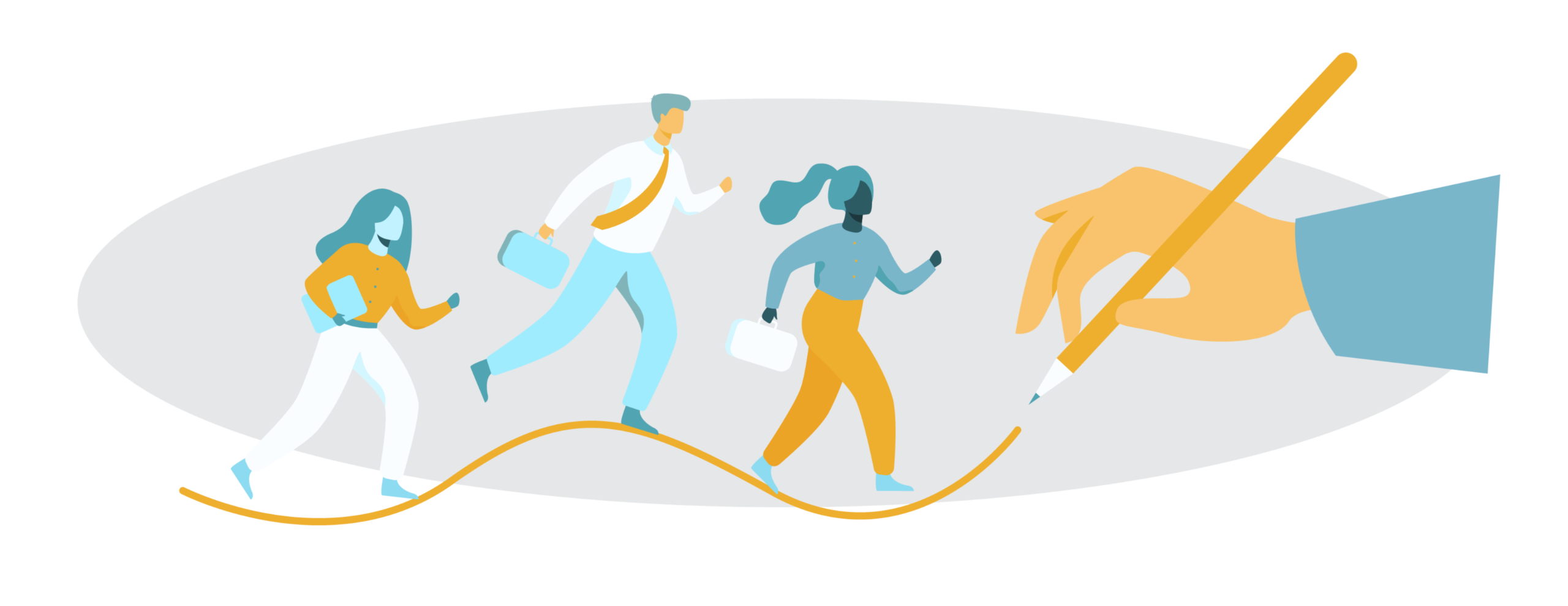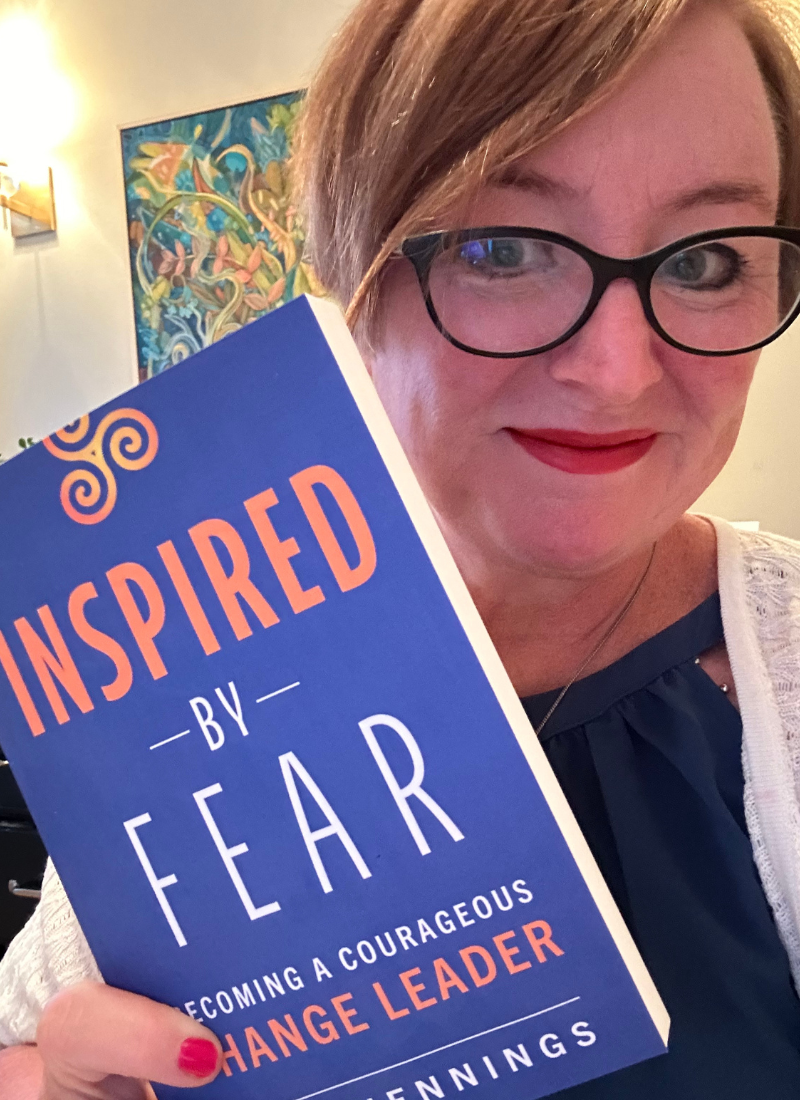A more human-centered approach to change
 Arek Socha from Pixabay
Arek Socha from Pixabay
Why leaders are critical and what 'good' looks like
As a leader, you have a ripple effect on people during change. You can develop others to level up or create a Titanic-esque disaster that people recall for decades. (You probably have an example or two of how NOT to lead change!)
But now that it's YOUR turn, you're unsure how to get yourself through it AND show others the way simultaneously.
You feel stretched and overwhelmed.
Good news: You can do both.
It starts with getting clear on what good looks like, and then methodically getting better at it -- WHILE you lead. It's a combination of getting the right mentorship, empathetic coaching, and practical tools to apply on-the-job. You get better at anticipating what's coming while helping your people get curious, reducing fear and uncertainty, and making change easier and more rewarding.
When you do this well, your organization and team thrive. That sets you up to take on the next growth opportunity.
What does good look like? Read on for key shifts in becoming a courageous change leader.
Shift #1: Lead people, manage tasks
By the time you've made the decision and said GO to the thing (whatever it is), you're impatient to start getting s*it done.
In trying to do it all, are you forgetting your people?
Yes, it's important to organize what needs to get done, and even assign that to a team member or project manager.
But the first thing a leader does is figure out how to develop their people. It means identifying who's going to grow--and how--then building a leadership plan to inspire and influence your people to keep at it when it gets hard.
Leaders focus on people, and delegate task management.


Shift #2: Using emotions to connect and influence
One of the hardest things to do as a leader is leveling up your skills while simultaneously helping others do the same. It makes you feel like you've got to be brave so others get on board.
But in putting on the mask, are you unintentionally signaling fear to your team?
A brave mask becomes a barrier. Sharing with vulnerability helps you inspire and influence because it comes from a place of authenticity. Your team connects and relates to you. It helps build trust.
This isn't easy to do, and it helps to have a sounding board to practice messaging and delivery before the big moment. (While also recognizing what might be an overshare).
When you acknowledge emotions, you help people feel psychologically safe. Your team is more likely to raise issues early and believe in what you're sharing.
Shift #3: Build people development into the process
With all of the change you've experienced in your career, there are undoubtedly some "bad" examples you easily recall. The communications were fluffy. There was a lot of swirl around decision-making and a lack of clarity. People held back from asking questions to gain clarity during meetings. People felt surprised by decisions, which left them frustrated and resistant. Training took way too much time.
But have you ever noticed how the change efforts that work also seem to do it invisibly?
Leading change effectively is a quiet victory. Often, it goes unnoticed (except for your personal satisfaction in seeing others grow!)
When you have a clear idea of who you need to develop, you zoom in on designing an experience that helps them build the skills along the way. Change isn't separate but part of the process and is baked into the normal flow of activities and permanent roles as part of an integrated on-the-job people development strategy. It's also how you know where to focus when it comes time to inspire and influence.
p.s. This is also why even some expert-led change efforts fail. When it's done FOR you, it's less likely to stick. Change done BY you is more likely to last.


Shift #4: Monitor your progress
The "change" is a date on the calendar. It's the moment you closed the deal to acquire that company. The go-live date for the new technology. The launch of your new brand.
The "transition" is when your people consistently perform new behaviors: When they act like one team, not two. When they start using your new system's analytics rather than instincts alone to make a decision. When their treatment of customers aligns with key brand messages.
Do you know which behaviors represent success in your transition?
You don't guess whether you're making progress when you use behaviors as your tangible measure of success. You KNOW it.
A partner and mentor to help you achieve your bold vision
These shifts represent opportunities for your growth. They're the places where leaders commonly misstep. But not you.
You're ready to explore how change can feel different with a partner committed to helping you and your team grow.
Start a conversation to learn how I've made big shifts easier for other world-class organizations and leaders.
Schedule strategy consult
Kelsy Willison
HR Director, Harmon
"Kris helped me learn how to calm the fear and chaos of people experiencing change and how to advocate for the best path within my organization."

Claudine Weiler
Managing Director, Total Rewards & Employee Services, The Toro Company
"After working with Kris, I've started incorporating milestones into projects that focus on ensuring the voice of customer / stakeholder feedback much earlier with the goal of understanding what questions and issues there will be and gaining a better understanding of the desired outcomes."

Bryan Ilse
Manager, Finance, The Toro Company
"Kris was easy to work with and helped us work through an impossible project. She was great at keeping us focused on what was important and the big picture. We would have spent a lot of time spiraling without her help."

See--and feel--good change leadership in action
Get crystal clear on what good looks like and the small shifts to level up your change leadership skills quickly. Read my new book Inspired by Fear: Becoming a Courageous Change Leader.
Buy the book
